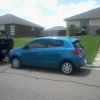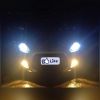Namco, please tone down your rhetoric. Why the personal attacks? As I have already stated, the Mirage uses 20-22 gauge wire on the speakers, not 18 gauge. Take the door panels off for yourself and you will see. As far as why I am sticking to the whole wire size matters argument is because it does. Oh, and I do not own a car audio business either but I did go to school, aced the 2 electrical clases, and have an ase certification in electrical repair.


 2014 Mitsubishi Mirage ES
2014 Mitsubishi Mirage ES
 Reply With Quote
Reply With Quote n/a
n/a

 Speck
Speck
 mitsumi
mitsumi
